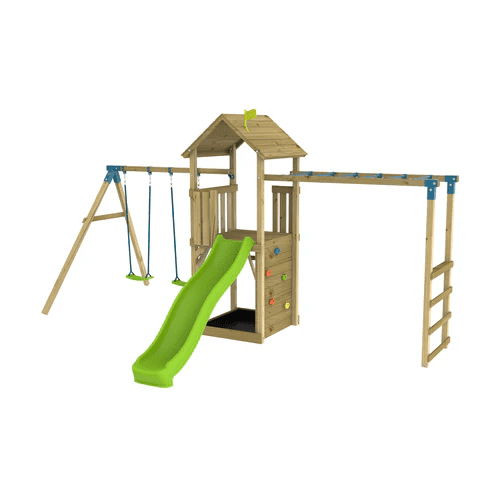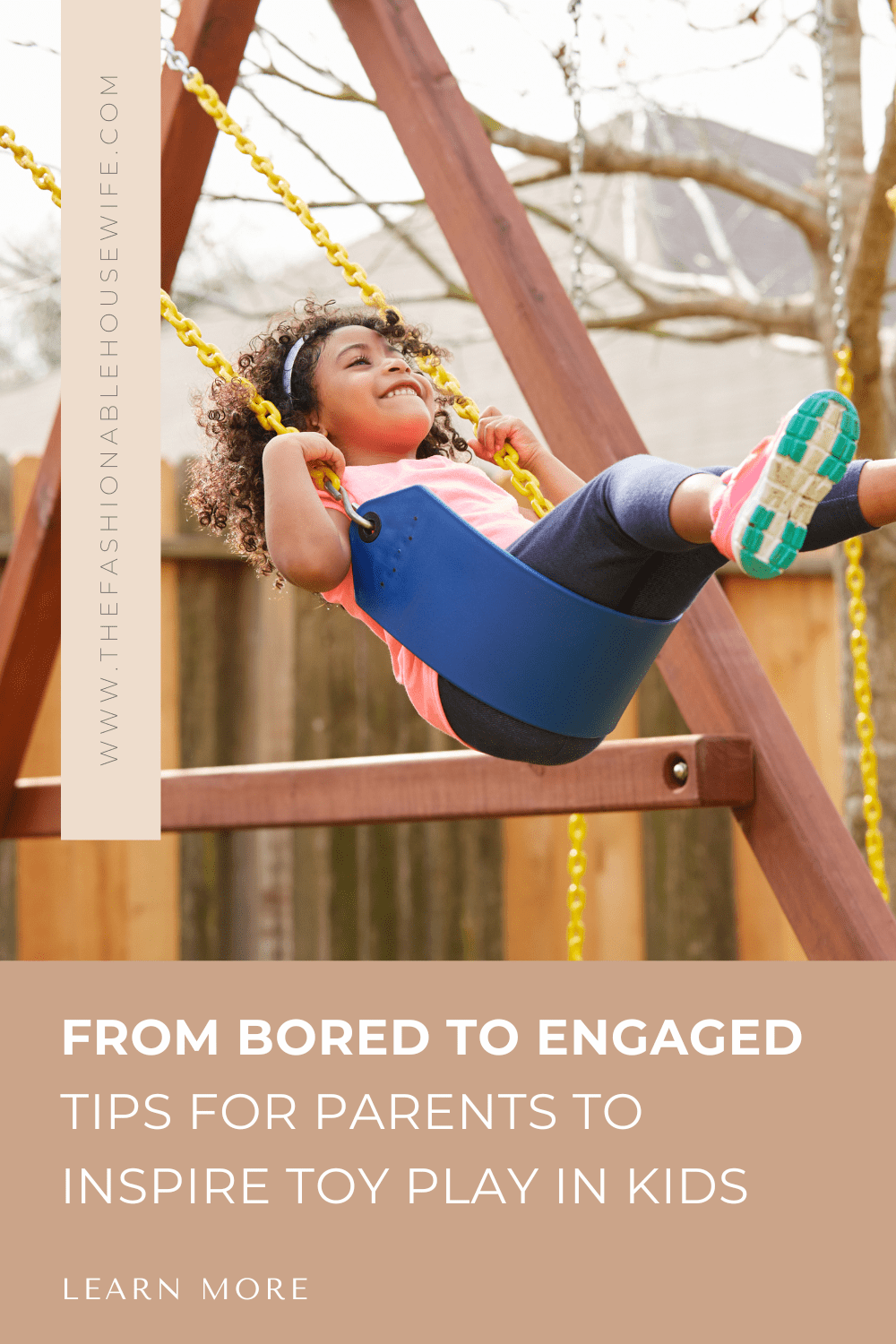From Bored to Engaged: Tips for Parents to Inspire Toy Play in Kids

Play is a fundamental part of childhood, helping children develop creativity, problem-solving skills, and social abilities. However, in an age where screens dominate much of our daily lives, many parents struggle to keep their children engaged with traditional toys. If you’ve ever found your child ignoring their playthings or complaining of boredom, don’t worry—you’re not alone. The good news is that there are plenty of ways to reignite their interest in play.
In this article, we’ll explore how parents can encourage children to engage with their toys, using strategies that make playtime exciting, interactive, and beneficial for their growth. We’ll also discuss the role of wooden climbing frames with slide and wooden play centres in boosting playtime engagement.
1. Create an Inviting Play Space
Children are more likely to engage with toys when their environment encourages play. A cluttered, chaotic room can be overwhelming, making it hard for kids to focus on any one activity. Instead, try organising their play area in a way that feels inviting.
- Use open shelves: Display toys visibly so your child can see what’s available instead of rummaging through a messy toy box.
- Rotate toys: If your child has too many toys, consider storing some away and switching them out every few weeks to keep their interest fresh.
- Set up designated zones: A reading nook, a construction corner, and a creative station can help children associate specific areas with different types of play.

2. Lead by Example
Children naturally imitate adults, so one of the easiest ways to encourage toy play is by joining in. If they see you enjoying an activity, they’ll be more likely to engage.
- Build with them: Whether it’s a train set, LEGO bricks, or a dollhouse, getting involved in their imaginative world makes playtime more exciting.
- Pretend play: Role-playing games such as playing ‘shopkeeper’, ‘doctor’, or ‘teacher’ help develop social skills and creativity.
- Demonstrate possibilities: Sometimes children need a little inspiration. Showing them different ways to play with a toy can spark their imagination.
3. Encourage Active Play Outdoors
Outdoor play is essential for a child’s physical and mental well-being. One of the best ways to keep them engaged is to introduce play structures that provide endless opportunities for adventure.
- Wooden climbing frames with slides offer not just fun but also physical development, improving coordination, balance, and strength.
- Wooden play centres with swings, climbing walls, and sandpits can transform a simple garden into an exciting playground.
- Encouraging outdoor play also helps reduce screen time and provides a natural space for social interaction.
If space permits, investing in outdoor play equipment can make a significant difference in how children engage with playtime. The ability to climb, slide, and explore gives them a sense of adventure while keeping them physically active.
4. Introduce Open-Ended Toys
Toys that have a single function, such as battery-operated figures that only make sounds, can quickly lose their appeal. In contrast, open-ended toys allow children to use their imagination in limitless ways.
Some great options include:
- Wooden building blocks
- Dolls and action figures
- Art and craft materials
- Magnetic tiles
- Play kitchens and pretend food
By giving children toys that allow for multiple uses, they remain engaged for longer periods and come up with new ways to enjoy their playthings.
5. Make Playtime Social
Children often enjoy playing more when they have a companion, whether it’s a sibling, a friend, or a parent. You can:
- Arrange playdates where children can share and interact with different toys.
- Encourage cooperative games that require teamwork, such as building a fort together.
- Join in the play yourself—it’s a great bonding activity and helps children learn from your enthusiasm.
If you have more than one child, setting up wooden play centres in your garden can encourage them to play together, fostering teamwork and sibling bonding.
6. Limit Screen Time
One major reason children lose interest in traditional toys is excessive screen time. While digital entertainment has its place, too much of it can hinder creativity and reduce engagement with physical play.
To create a healthy balance:
- Set specific screen-time limits and encourage play-based alternatives.
- Make screen-free zones, such as the dining room and bedroom.
- Introduce tech-free family time where everyone engages in board games, outdoor activities, or storytelling.
The less time children spend passively consuming content, the more they’ll turn to their toys for entertainment.
7. Add a Sense of Challenge
Children love games and activities that offer a little challenge. Whether it’s a puzzle, a scavenger hunt, or an obstacle course, adding a goal to playtime can make it more exciting.
- Set up an adventure course: Use wooden climbing frames with slides to create a mini obstacle course in your garden. Challenge them to climb, slide, and run around in a set time.
- Use role-play missions: If they have superhero or pirate figures, create a ‘rescue mission’ storyline to encourage more engagement.
- Introduce problem-solving toys: Games like puzzles, shape sorters, and construction kits keep children mentally engaged.
8. Reward Creativity and Effort
Sometimes children need a little motivation to re-engage with their toys. Positive reinforcement can help them see the value in independent play.
- Praise effort rather than outcome—if they build something unique with their blocks, celebrate their creativity.
- Create a display space for artwork or LEGO creations, showing them their efforts are valued.
- Use a reward system—stickers, stars, or small incentives can encourage continuous engagement.
9. Incorporate Learning into Play
Educational toys don’t have to be boring. By integrating learning into fun activities, children are more likely to enjoy their playtime.
- Science kits for simple experiments
- Number and letter puzzles
- Books that inspire play, such as ‘The Gruffalo’ with a matching character set
- Interactive storytelling where children act out parts of a story
When children associate play with discovery and excitement, they’ll naturally spend more time engaged.

Conclusion
Encouraging children to engage with their toys doesn’t have to be difficult. By creating a playful environment, leading by example, introducing wooden climbing frames with slides and wooden play gym, and incorporating elements of challenge and creativity, you can transform playtime into something exciting and rewarding.
Remember, play is essential for your child’s development. Whether it’s building, climbing, role-playing, or creating, the key is to make toys and playtime an integral part of daily life. With these strategies, you’ll help your child move from boredom to endless engagement—learning, growing, and having fun along the way.

